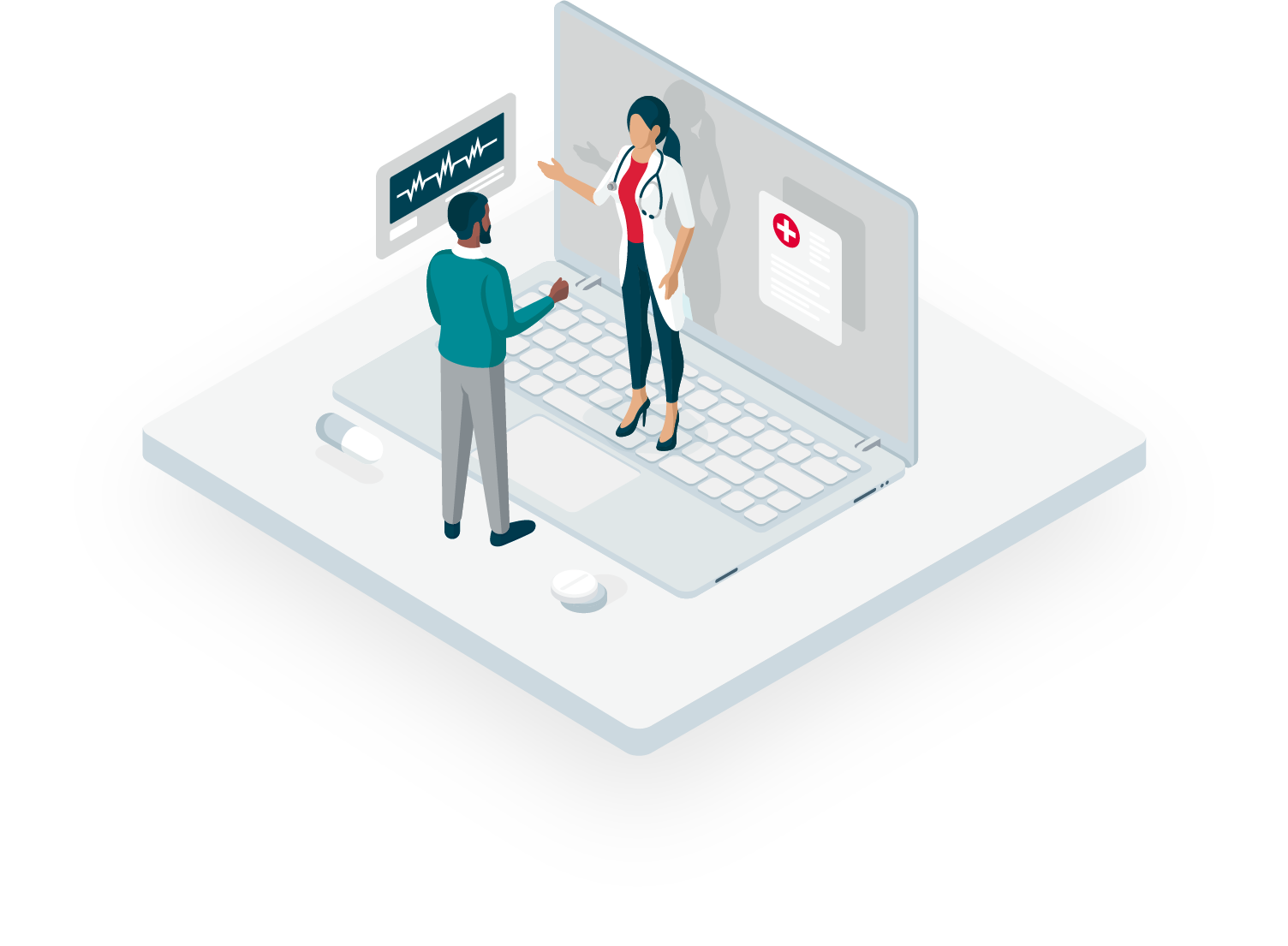What is the patient journey?
At its core, the patient journey encompasses three stages:
- Pre-Visit: This is the period before a patient physically sees their doctor. It involves searching for a healthcare provider, scheduling an appointment, and completing any required pre-visit steps.
- Visit: This stage encompasses the actual interaction between the patient and doctor. It includes activities such as getting checked into their appointment, waiting to see their doctor, and seeing their doctor. These interactions can happen in-office or virtually via telehealth.
- Post-Visit: Once a patient leaves their doctor’s office, they’ll continue to interact with the doctor. This stage will include all post-visit activities such as filling prescriptions, following care plan instructions, or scheduling follow-up appointments.
The activities that occur within each stage of the patient journey are often non-linear and can vary based on the patient’s personal preferences, access to technology, or even the type of care they are looking to receive.
The significance of optimizing this journey cannot be overstated, as a positive patient experience is closely linked to better health outcomes and lower overall cost of care. Recent studies by Accenture indicate that hospitals providing a superior patient experience typically achieve margins that are 50% higher than those of their counterparts.
How can providers optimize the patient journey?
Optimizing the patient journey requires a multifaceted approach, integrating technology, communication, and patient-centered care principles.
Some of these strategies include:
- Seamless Access: Ensure patients can easily manage their healthcare experience even when they’re not physically in the office. Technology is often required to facilitate these offline interactions. Some examples include online scheduling platforms, the digitization of intake forms and an easy-to-use patient portal for accessing lab results and seamlessly communicating with providers.
- Personalized Experiences: Every patient is unique and has different preferences for how and when they’ll interact with their providers. One person may prefer email or text, and another receiving phone calls. Give them multiple options to manage the healthcare experience and communicate with providers, so they can use what’s most comfortable to them.
- Enhanced Communication: Foster clear, empathetic, and consistent communication throughout the patient journey. This includes providing information in accessible formats, actively listening to patient concerns, and involving them in decision-making processes.
- Coordination and Continuity: Facilitate smooth transitions between different phases of care and across healthcare settings. This involves effective coordination between healthcare providers, specialists, and support services to ensure continuity of care.
Barriers to optimizing the patient journey
Despite the importance of optimizing the patient journey, there are several barriers that prevent providers from doing it effectively.
These include:
- Fragmented User Experience: Technology plays a pivotal role in optimizing the patient journey. Yet, there are few solutions on the market that can fully cater to each touchpoint a patient has during their care experience. As a result, providers leverage solutions from multiple vendors to satisfy these needs, leading to a disjointed experience for both patients and staff. Multiple logins add unnecessary frustration, and the inconsistent look and feel across each solution exacerbates the issue. These impediments can deter patients from interacting with these solutions, negatively impacting a provider’s ability to optimize the patient journey.
- Lack of Continuity: Healthcare systems often operate in silos, hindering seamless coordination and communication between providers and services. This, in turn, impedes a patient’s ability to effectively manage the entirety of their care experience, particularly if they are receiving treatment from multiple providers across different networks.
- Socioeconomic Barriers: Disparities in socioeconomic status and access to technology can hinder individuals from utilizing the tools that providers have implemented to optimize the patient journey. Furthermore, even in cases where socioeconomic conditions do not prevent patients from utilizing technology, some may lack the technical know-how to fully utilize all the resources available to them.
- Resistance to Change: Implementing changes to optimize the patient journey may encounter resistance from entrenched practices, cultural norms, or technological barriers.
Optimizing the patient journey with the right technology
Creating a patient journey that fosters positive experiences, increases engagement and improves outcomes can be accomplished by using technology that caters to each patient’s unique situation.
Let’s demonstrate what an optimized patient journey looks like using InteliChart’s award-winning patient engagement platform. With solutions that specifically cater to each stage of the patient journey, our solutions can significantly enhance the patient experience while streamlining administrative processes for staff.




 During the visit, Sarah’s new provider notes that some of her vaccinations are out-of-date and recommends getting caught up. Sarah will also have a routine blood draw to check for diabetes and other indicators of disease.
During the visit, Sarah’s new provider notes that some of her vaccinations are out-of-date and recommends getting caught up. Sarah will also have a routine blood draw to check for diabetes and other indicators of disease. 
.gif?width=400&height=400&name=Sarah-Campaign-Wave%20(2).gif)

